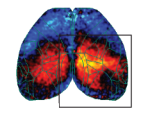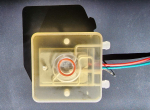Isolating perception in the cortex
How sensory stimuli become perceived is one of the greatest mysteries in neuroscience. At its most fundamental level is the question of why is it that some stimuli are perceived at all, enabling the subject to report on their presence, while other stimuli remain subliminal. The goal of this research is to develop new behavioral paradigms that isolate perception-related activity and combine these paradigms with neural recording and manipulation approaches to uncover the mechanism by which stimuli become perceived by the brain.




